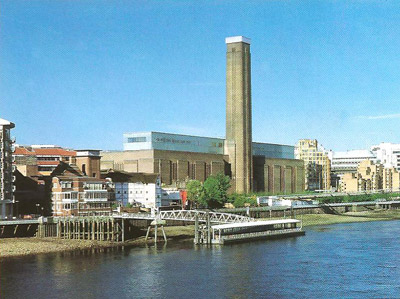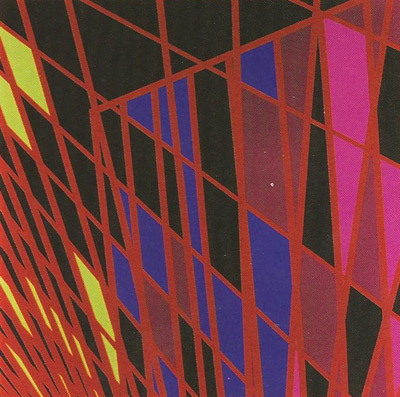Paulina Kolczynska Conversation with Dennis Scholl
Tate America: A Collection in the making
(Published by Tema Celeste - March-April, 2002)

View of Tate Modern, 2002. Courtesy Tate Modern. Photo Credit: Marcus Leith
Long before London’s Tate Gallery opened Tate Modern in May 2000, the institution had encountered the need for significant changes in the way it sought funding. With its budget frozen at $3 million (Euro 4.3 million) in 1980, the museum began to look to outside organization to help fund its acquisition budget. The Patrons of New Art, a group of donors supporting the acquisition of contemporary art, was established in 1984, and its influence proved very strong. One of the Patron’s first programs, the Turner Prize, become the leading event for promoting emerging British artists, helping to feed the ongoing debate about contemporary British art.
As the Tate Gallery began to raise funds for its new museum, it soon became apparent that significant financial support would come from the United Sates. Private collectors from New York, Los Angeles, and San Francisco donated nearly 20 percent of private funds received by the museum. In 1988, after Sir Edwin Manton created the endowment for the Tate American Fund, the Tate Gallery decided to open a fund-raising satellite in New York dedicated to creating new relationships with American collectors and strengthening old ones. Thanks to generosity and vision of Donald Marron, currently a chairman of UBS America, office space in what is now the UBS Paine Webber building was donated for this purpose. The Tate American Fund received its first endowment in 1988 and now has a fund of $35 million (Euro 39.3 million) . Out of this initiative grew the Tate American Collectors Forum, which starting functioning in 2001 and whose aim is to gather together a group of collectors to acquire contemporary art from the Americas-and help them learn more about Tate Modern in process.
Richard Hamilton, the forum’s director of development in New York, is unsurprised by American collectors ‘ enthusiasm for Tate Modern’s efforts. “The Tate has the biggest collection of American art outside of United States , which helps to strengthen our relationship with American collectors. The museum’s policy, and the launching of the international council in 1995, moved the Tate toward being an international establishment rather than simply British. “ In establishing the forum, Hamilton notes, the museum targeted “active collectors, experts in the field with a defined vision and outstanding collections. “ Tate-Modern invited Florida-based collectors and entrepreneur Dennis Scholl-who, with his wife Debra Scholl, had chaired the photography committee at the Guggenheim Museum-to head up the group. According to Hamilton, Dennis Scholl “understood an institution acquires works of art, how it has to be careful and perceptive, and that this usually takes a very long time. He is also a very good mediator. Currently serving as the forum’s first chairman, Scholl talks about the aims and program of this daring venture.

Sarah Morris, Rio (with Palms) (Las Vegas), 2000, gloss household paint on canvas, 214 x 214 cm. Courtesy Jay Jopling/White Cube, London
Paulina Kolczynska: What enticed you to accept this offer and why do you think Tate Modern approached you ?
Dennis Scholl: I think what attracted the Tate was that we were able to get the the museum to involve itself with artists that they would not normally collect. We had investigated purchasing works by Andreas Gursky, Olafur Eliasson, and Anna Gaskell for the Guggenheim, and because of that we were able to acquire early works and in large quantities.
Paulina Kolczynska: What is the real influence of the advisory committee?
Dennis Scholl: I think our role is twofold: It is important to raise the money and give the museum additional acquisition power. We also provide curatorial support, respond to curatorial suggestions, and participate in the selection process.
Paulina Kolczynska: Is there any risk that the advisory committee might cross that elusive boundary between collector/advisor and curator?
Dennis Scholl: I think it is very important to understand that our role is curatorial support. As members of the acquisition committee we should never lose sight of that. One opportunity we have as members is that we are here in the Americas. We travel around on a regular basis and we see things that sometimes curators from London do not see. We are therefore a kind of advance team of scouts. We will bring things to their attention, but the curators alone make curatorial decisions. In the US, the process might be different from that in the UK, where exhibition curators don’t generally make decisions about acquisitions. I must say that Jeremy Lewison, director of the Tate acquisitions and research programs, was fantastic in allowing the role of the curators to expand in a way that benefits everybody.
Paulina Kolczynska: So who are the members and how were they chosen?
Dennis Scholl: As far as the selection process goes, it is driven by the museum. We are always looking for good, committed , cutting –edge collectors interested in patronage. This is a wonderful opportunity. We are all working very hard to be patrons, not just consumers , in the art world. The synergy of projects like the Tate Gallery in the Americas allows us to help artists in so many different ways. This is important.
Paulina Kolczynska: What was Tate director Sir Nicholas Serota’s input?
Dennis Scholl: After a long discussion at our first meeting, Nicholas Serota reminded us where the museum stands in contemporary art, in time, and in history. That is why it was important to get to some consensus among committee members about the artists “prior” to acquiring them. That is a very important tension point. You want to get there first and have access to the best works for a price that is reasonable, but you do not want to get there so early that the work might not stand the test of time. This is the balance that we try to strike every time.
Paulina Kolczynska: What were the forum’s first choice?
Dennis Scholl: The first pieces we have acquired for the Tate are works by Vik Muniz, who is still pretty early in his career. Muniz used dust left over from a Richard Serra piece that was on the museum floor in a photographic piece. We bought that. We have also decided to purchase a painting by Sarah Morris called “Rio”.
Paulina Kolczynska: The forum encourages artists to experiment and seeks to give them space for growth. Is that what differentiates your focus and aims from other museums?
Dennis Scholl: This is a very important point. One of the great things we are going to do with the Tate is to do things differently from a typical acquisition committee. We will encourage the museum to take risks and be brave. This is the quality that many museums can no longer embrace. We are already commissioning work for the Tate. Normally is the work of art that curators bring that we collectors would be debating about. This time, it is an artist we face. We plan to commission site-specific work in Britain by artists of the Americas. We want to encourage artists to make work specifically for the Tate. This makes the context different. It is outside the boundary.